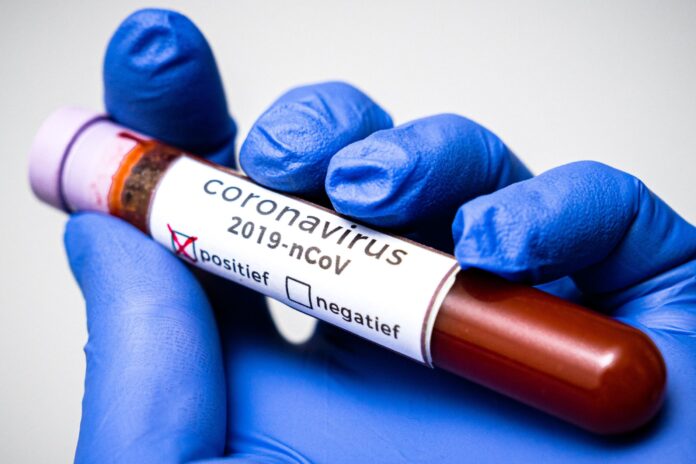A technical glitch that meant nearly 16,000 cases of coronavirus went unreported has delayed efforts to trace contacts of people who tested positive.
Public Health England said 15,841 cases between 25 September and 2 October were left out of the UK daily case figures.
They were then added to Saturday’s figure of 12,872 new cases and Sunday’s 22,961 figure.
PHE said all those who tested positive had been informed. But it means others in close contact with them were not.
The issue has been resolved, PHE said, with outstanding cases passed on to tracers by 01:00 BST on Saturday.
The technical issue also means that daily totals reported on the government’s coronavirus dashboard over the last week have been lower than the true number.
The BBC’s health editor Hugh Pym said daily figures for the end of the week were “actually nearer 11,000”, rather than the around 7,000 reported.
Labour has described the glitch as “shambolic”.
Meanwhile, the head of the government’s vaccine taskforce, Kate Bingham, has told the Financial Times that less than half of the UK population could be vaccinated against coronavirus.
“There is going to be no vaccination of people under 18,” she said. “It’s an adult-only vaccine for people over 50, focusing on health workers, care home workers and the vulnerable.”
Prime Minister Boris Johnson has warned it could be “bumpy through to Christmas” and beyond as the UK deals with coronavirus.
Speaking to the BBC’s Andrew Marr on Sunday, the PM said there was “hope” of beating Covid, and called on the public to “act fearlessly but with common sense”.
At a time when the testing system has come under intense scrutiny after reports of delays and a system struggling to keep up with demand, the latest revelation could not have come at a more awkward moment for the government at Westminster.
Because the nearly 16,000 extra positive test results had been not entered into the test and trace system, their recent contacts were not immediately followed up.
Experts advise that ideally contacts should be tracked down within 48 hours.
Officials say the technical problem – thought to be IT related – has been resolved, with all the new cases added into totals reported over the weekend.
But all this will hardly improve public confidence in the testing system in England.
And it muddies the waters for policy makers and officials trying to track the spread of the virus at what the prime minister has called a “critical moment”.
On Sunday, the government’s coronavirus dashboard said that, as of 09:00 BST, there had been a further 22,961 lab-confirmed cases of coronavirus in the UK, bringing the total number of cases in the UK to 502,978.
Another 33 people were reported to have died within 28 days of testing positive for Covid-19 as of Sunday.
Public Health England’s interim chief executive Michael Brodie said a “technical issue” was identified overnight on Friday, 2 October in the process that transfers Covid-19 positive lab results into reporting dashboards.
It was caused by some data files reporting positive test results exceeding the maximum file size.
“After rapid investigation, we have identified that 15,841 cases between 25 September and 2 October were not included in the reported daily Covid-19 cases. The majority of these cases occurred in the most recent days,” he said.
“Every one of these cases received their Covid-19 test result as normal and all those who tested positive were advised to self-isolate.”
He said they worked with NHS Test and Trace to “quickly resolve the issue and transferred all outstanding cases immediately into the NHS Test and Trace contact tracing system”.
“We fully understand the concern this may cause and further robust measures have been put in place as a result,” he said.
Test and Trace and Public Health England joint medical adviser, Susan Hopkins, added that “a thorough public health risk assessment was undertaken to ensure outstanding cases were prioritised for contact tracing effectively”.
PHE said NHS Test and Trace have made sure there are enough contact tracers working, and are working with local teams to ensure they also have sufficient resources to be urgently able to contact all cases.
The number of call attempts is being increased from 10 to 15 over 96 hours.
There have been clear problems with the government’s Test and Trace data, but they do not change our view of the UK’s trajectory.
Cases surged at the beginning of September, they may still be climbing, but not as quickly as anticipated just a few weeks ago.
This perspective comes from three key sets of data – the Office for National Statistics, the React study by Imperial College London and the Covid symptom tracker app.
None are blighted by either the current issues with the Test and Trace data or by people struggling to access a test.
The real fallout of the weekend’s statistical chaos is not the numbers, but the people who should have been contact-traced, told to quarantine and instead may have been unwittingly passing on the virus.
Work and Pensions Secretary Therese Coffey told BBC Breakfast PHE had identified and rectified the glitch and would ensure it did not happen again. But she was unable to say if contacts of those who had tested positive had been traced and told to self-isolate where appropriate.
Labour’s shadow health secretary Jonathan Ashworth said: “This is shambolic and people across the country will be understandably alarmed.
“[Health Secretary] Matt Hancock should come to the House of Commons on Monday to explain what on earth has happened, what impact it has had on our ability to contain this virus, and what he plans to do to fix test and trace.”
Bridget Phillipson, shadow chief secretary to the treasury, told BBC Breakfast she wanted to know whether it had had “any impact on government decision making around local restrictions”.
A Department of Health spokesman said the issue had not affected people receiving test results, and all those who tested positive had been informed in the normal way.
News of the glitch in the daily count first emerged late on Saturday, when the UK announced more than 10,000 new coronavirus cases for the first time since mass testing began.
The government said the technical issue meant some cases during the week were not recorded at the time, so these were included in Saturday’s data.
The daily total saw a significant rise from 4,044 on Monday to a then-high of 7,143 on Tuesday. However, over the next four days the daily total remained stable – varying between 6,914 and 7,108 – at a time when continued increases might have been expected.
Then came the big leap in numbers – a far bigger day-on-day increase than at any time in the entire pandemic – which was announced on Saturday, five hours later than usual, and was accompanied by the government explanation.
In an interview with the Sun, Rishi Sunak has defended his Eat Out to Help Out scheme, saying he had “no regrets”, after suggestions it may have helped fuel the second wave of coronavirus cases.
Source: BBC




















































